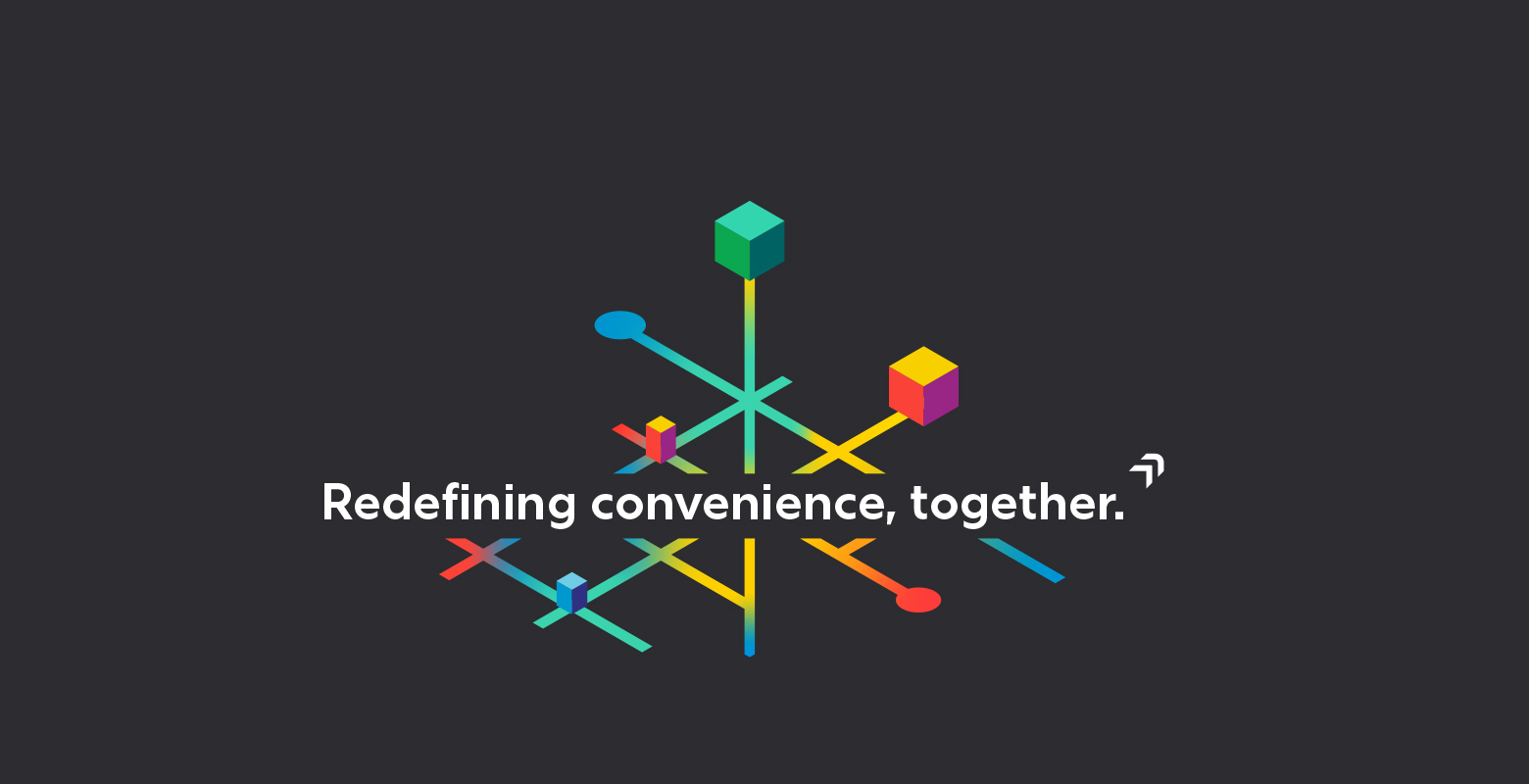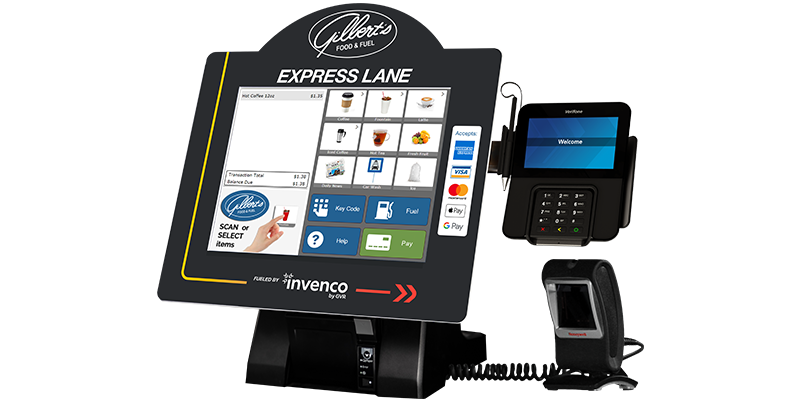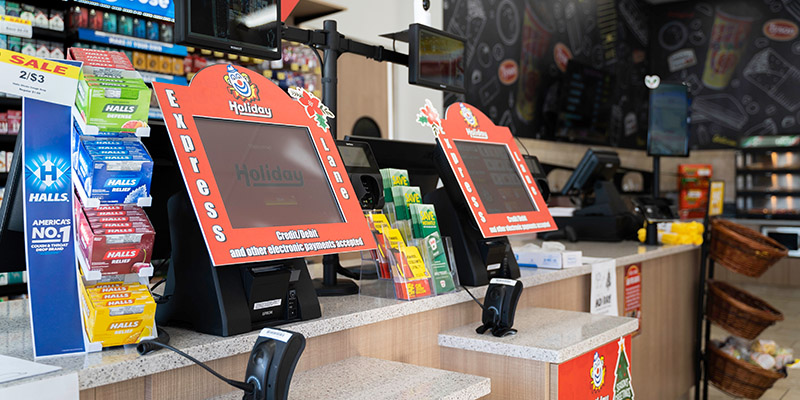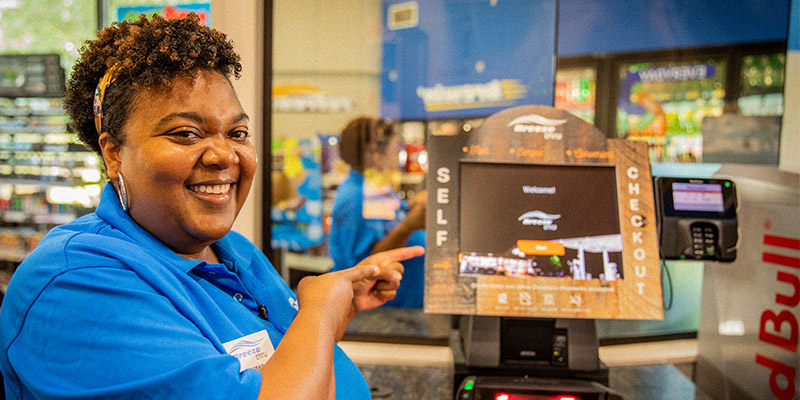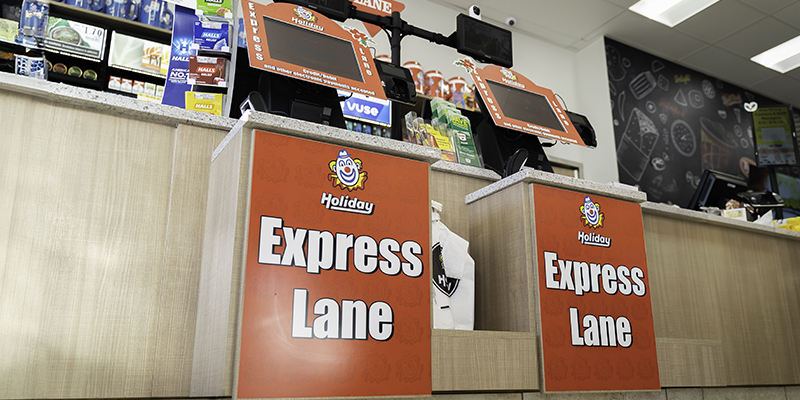The Need for Speed
What makes a frictionless experience for your customers? It usually follows this general formula:
- Store layout allows quick and easy shopping
- Intuitive self-service options are available
- Most, if not all, customers’ preferred payment methods are accepted
Self-checkout systems like Passport® Express Lane™ are critical tools to put this formula into action.
The primary advantage is significantly reduced wait times. When 41% of customers abandon their purchases if they see a long line, optimizing queues is invaluable.
Self-checkout allows customers to process their purchases at their own pace. In many cases, that pace is faster than the traditional checkout allows.
One System for Every Customer
When implementing self-checkout, a good rule of thumb is to choose a system that accommodates at least 85% of the transactions that happen at your store.
If most of your customers use a mix of credit, cash, and loyalty cards – your self-checkout must accept those payments from day one.
“It really annoys customers when they get to the front of a queue and then have to get moved to another queue,” says Jack Hogan, SVP of Partnerships at Mashgin. “Oh, I can't use my loyalty on this. Oh, I can't use my cash on this. Oh, I can't pay for fuel on this. Oh, you don't take my coupons. Suddenly they find that they're restricted.”
Express Lane accepts any payment type your customers can throw at it, from cash to credit to EBT – which is an important distinction when 47% of all sales under $25 are still done in cash, according to national averages.
What Success Looks Like
Ideally, stores should strive for a minimum 20-25% adoption rate. Meaning, one out of every 4 transactions at your store happens through self-checkout. With the right implementation strategy, you may see even better results with some stores reporting up to 70% adoption rates.
“If you're adopting [self-checkout] and you’re going all in,” says Larry Bowden, Director of Sales, Retail Solutions, Invenco by GVR. “Cashiers are engaged, product placement is there, signage is there. 25% is a layup.”
Here are three qualities that can help any c-store with initial buy-in:
- Visibility – Customers must know self-checkout is available as soon as they step through the door or better yet, from the pump
- Accessibility – Ensuring nearly every customer, regardless of their purchase or payment, can use the kiosk
- Reliability – Choose a system that always works when you need it to work
“For the first 30 days of adoption, the most successful stores will have a store associate assist new customers on how to use it,” says Bowden. “This also gets them in the habit of using it.”
Good for Customers, Good for Employees, Good for You
Self-checkout is not about eliminating labor, but rather reallocating it. No longer stuck behind the counter, employees can take on other essential tasks, such as cleaning, stocking shelves, and assisting customers on the floor.
To visualize the ROI, retailers can track metrics like increased sales per labor hour and watch it grow alongside self-checkout adoption rate.
Shrinking Shrink with Self-Checkout
Retailers are rightly concerned about the possibility of increased shoplifting when implementing self-checkout. However, the general nature of c-stores helps reduce the threat where bigger-sized stores have fallen short.
"The convenience retail space has a smaller footprint store,” says Curtis Hallowell, Crane Payment Innovations. “Employees are more engaged with customers because they're close. We have clients actually tell us that their theft has gone down for the very fact that you now have your employees out from behind the desk and on the floor."
